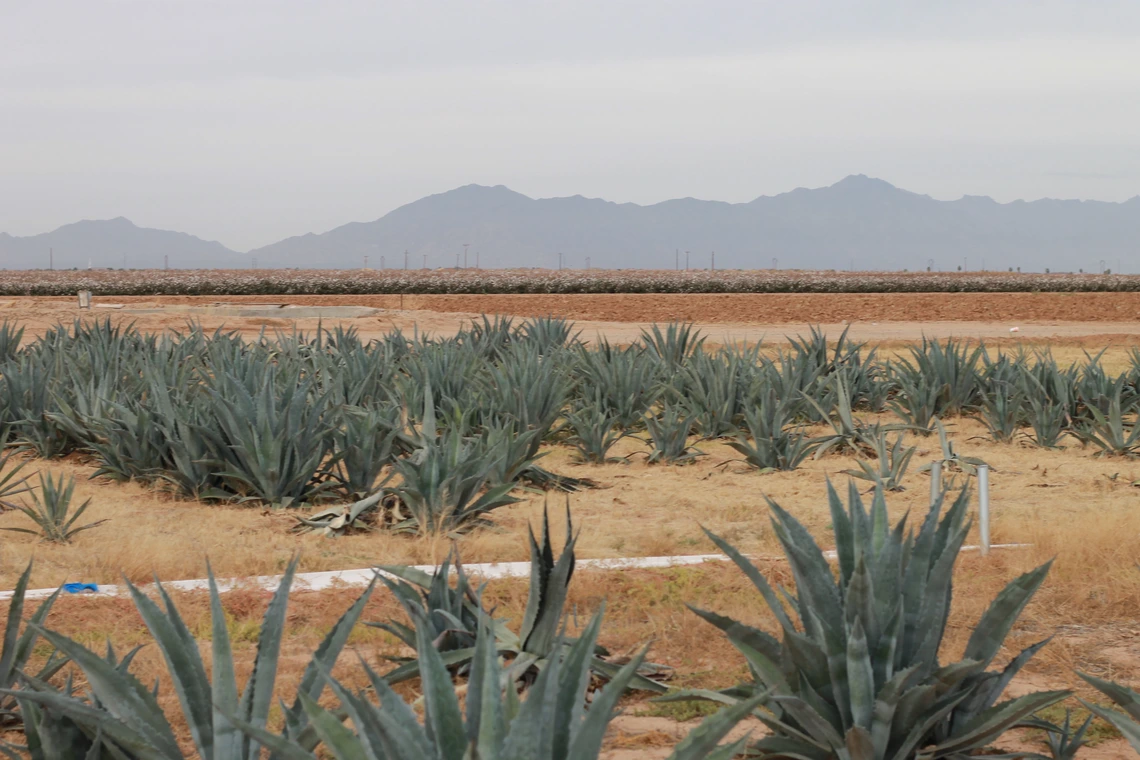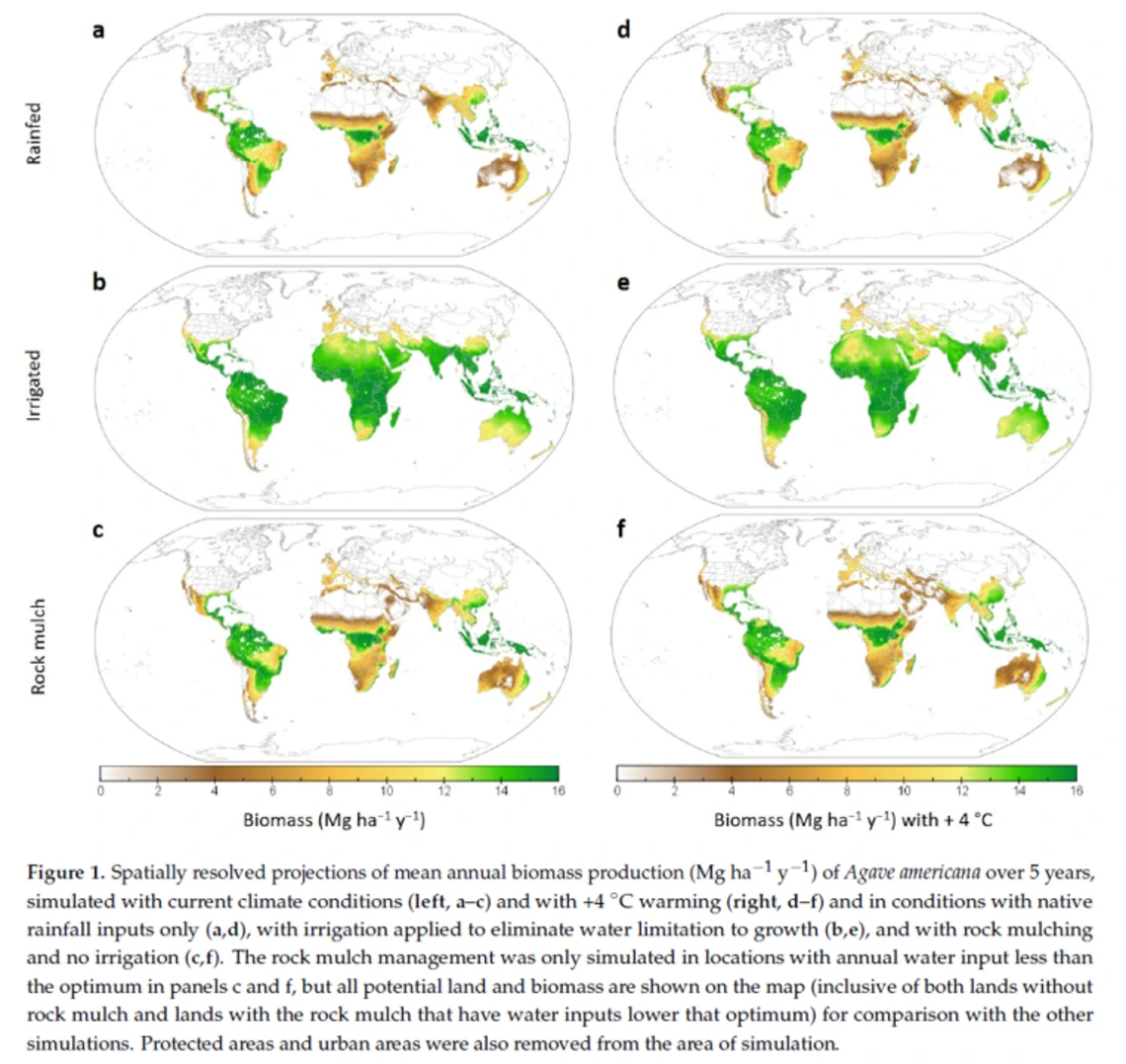Predicting growth of Agave americana

Agave field trial at the Maricopa Agricultural Center
David LeBauer
Agave agriculture has a long history and a wide range of applications. Today, agave is widely cultivated for sugar and tequila. Historically, agave has been used for food and fiber around the world - you can find sisal rope at your local hardware store. Ancient agave fields across the Sonoran desert provide evidence that this plant was an important source of food as well as materials used in clothing and construction. The Hohokam people even developed an approach to cultivating agave, called 'rock mulching', to conserve water and increase growth.
Sarah Davis conducted a series of field trials at the University of Arizona's Maricopa Agricultural Center. Based on these trials, she had developed a model that predicts the growth of Agave americana based on environmental factors - including rainfall, sunlight, and minimum temperature. David LeBauer helped apply this model to current and future climates in order to predict the yield potential, irrigation requirements, and impact of rock mulching on A. americana using the 4km resolution Terraclimate dataset. The pair worked with Terraclimate creator and climatologist John Abatzoglou to develop new maps of future absolute minimum temperatures required by the model.
Even a relatively simple model presented computational challenges. The climate files were too large to read into a computer's memory for analysis. First we tried loading the data into a SQLite database, but this substantially increased the size of the dataset, and the model took hours to evaluate. What worked well was the NetCDF Operators (NCO) open source software suite of tools. These are highly efficient and powerful tools that allowed us to run the models and generate new data layers in the native NetCDF format in which Terraclimate and many other climate data sources are available.
The results were published last month in the journal Agronomy (Davis et al., 2021), and all of the code used for the analysis is provided on GitHub https://github.com/az-digitalag/agave-prediction
Davis, Abatzoglou, and LeBauer 2021 "Growing Region and Yield Increase for Agave americana with Future Climate." Agronomy, 11, 2109. doi:10.3390/agronomy11112109

Figure 1 from Davis et al 2021: Potential agave yield under current and future climates, and under different water management scenarios.

